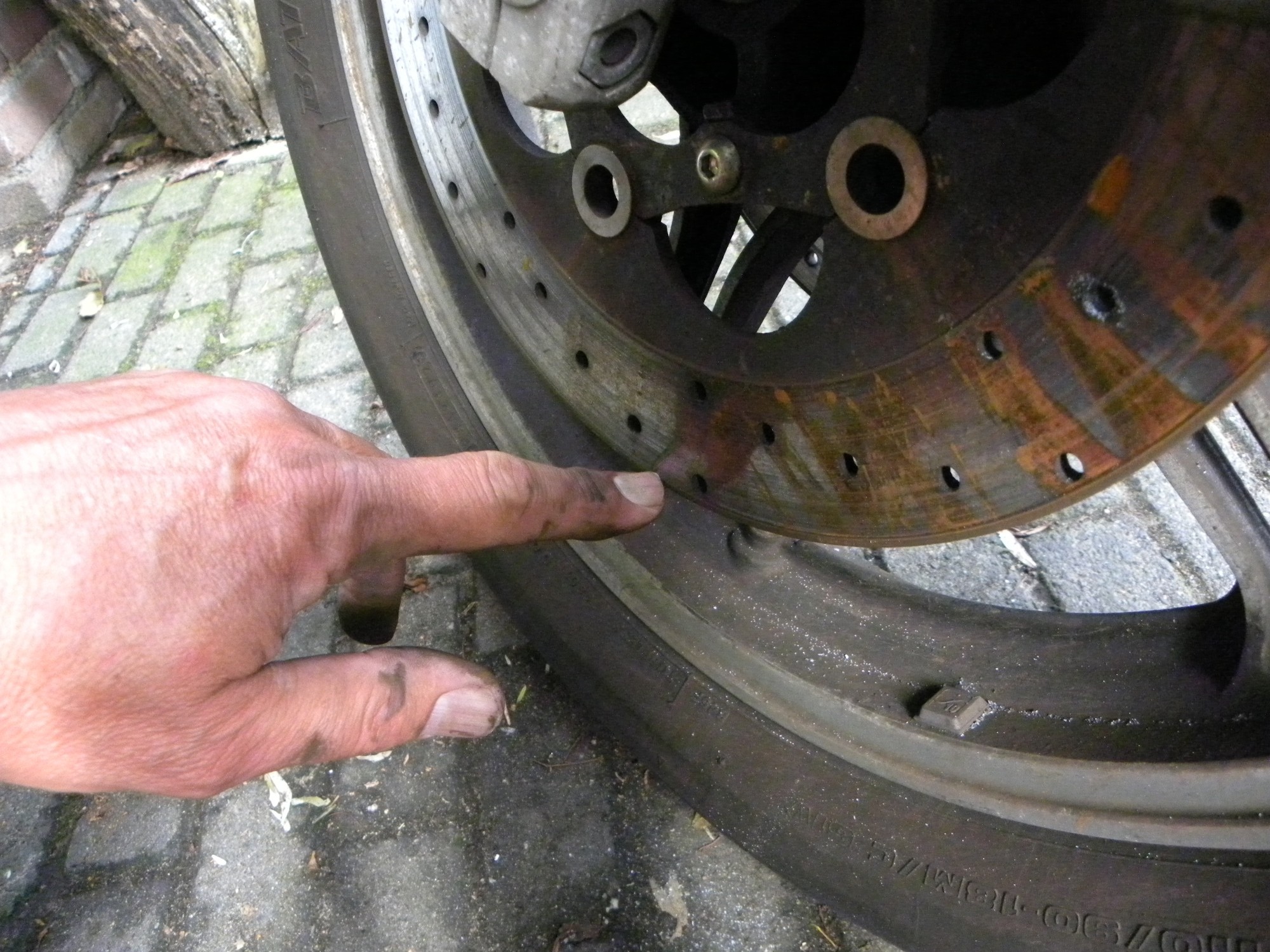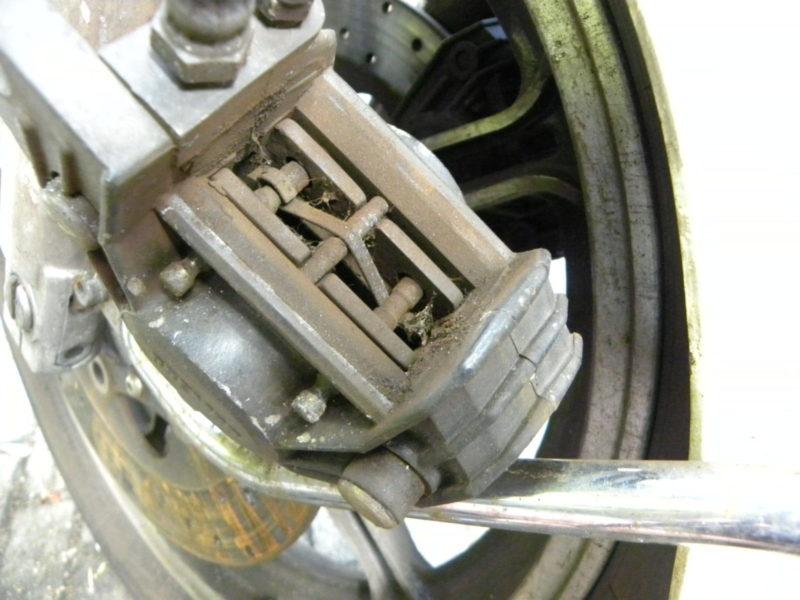Maintenance of the brakes
The editorial Guzzi started to consume more gas and got an increasingly shorter exit route. A brake was stuck. The Guzzi has a separate braking system and the right front disc turned out to be the culprit. The reason the brake got stuck? That was internal contamination of the caliper.
Brake pads and discs
The condition of the brake pads and discs is easy to check. If you occasionally look between the brake disc and the blocks, you will see the thickness of the brake lining. Never use your brake pads until their lining is paper thin. Replacing with a lining thickness of minimum 2 millimeters is really the limit, and someday the brake discs will be worn out. If the brake disc has a raised edge it is usually that far. But many of our two-wheel classics still have a rear drum brake. It also requires attention.
Replacing the brake shoes (Drum brakes)
Firstly, the brake shoes must be reset to such an extent that the brake drum can be removed. It is possible that adjusting bolts are on the rear of the anchor plate. By turning these adjusting bolts, there will be spelling between the brake shoes and brake drum. There are also self-adjusting brakes, so you will not find any adjusting bolts. The hand brake cable for removing the brake drum will also have to be reset. If the drum can be removed, the brake shoes can be removed. Do it side by side so that there is always another example.
If the lining on the brake shoes is still sufficient and the fluid has not become greasy at all, the brake shoes can be sanded with coarse sandpaper. If the brake lining is worn out, it will have to be replaced. By putting aside the rubber dust caps, also check the brake cylinder for leaks. If brake fluid leaks, these cylinders will have to be replaced. Thoroughly clean and assemble the whole, thereby adjusting the brake shoes / handbrake so that the drum remains free to run. If the brake cylinders are also replaced, the brakes will have to be bled. This is done by pumping with the brake pedal to keep pressure and loosening the bleed nipple, this is repeated until there is no more air in the brake system. Or treat yourself to an Eezy Bleeder. Then you get the job done on your own.
Replace brake pads
Even if you are not an experienced key man, you can replace the brake pads yourself. To install new brake pads, the caliper can often simply remain mounted. The brake lines can therefore remain in place. Releasing a caliper from the suspension is sometimes difficult, but with well-fitting tools it should work. After the brake caliper has been released, remove the brake pads from the claw. Take a picture of how they fit in for the reassembly of the whole. Clean the small loose parts (feather, pins) and set them aside so that they do not get lost. Ensure that the brake line is not squeezed in short turns. First blow the case clean with compressed air (in the absence of a compressor: use compressed air from an Action spray can).
Work clean
While breathing in, pay attention to the huge cloud of fine dust that is released during this process, perhaps use a mouth cap. Then remove all visible dirt with a brake cleaner. If necessary, brush stubborn dirt away with, for example, a toothbrush. Then it is time to push the brake pistons back into the caliper. They are much farther out with worn brake pads than with new ones. than with the new, thicker blocks. The new brake pads can then be fixed in place and the blocks fit around the disc again. The further disassembly is done in the reverse order of disassembly.
Check whether the fixing bolts are still in good condition. Replace them with the least doubt. It is clear that no oil or grease may come into contact with the brake lining or disc. If that happens, you must thoroughly clean everything with a brake cleaner.
Of course, tinkering with your braking system is at your own risk.






